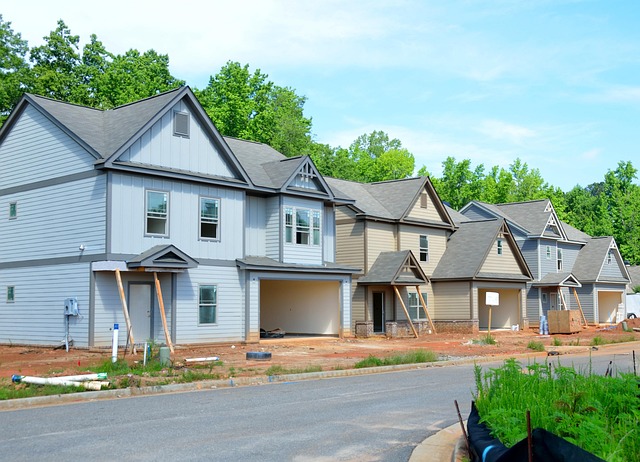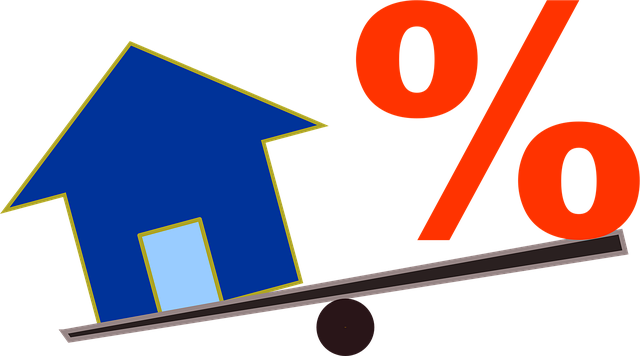Maximizing Home Savings: Unveiling Real Estate Closing Costs Impact

In real estate, closing costs are a crucial but often overlooked aspect for buyers and sellers. Expe…….
Mortgage-refinancing, a strategic financial move, has emerged as a powerful tool for both homeowners and the global economy. This process involves replacing an existing mortgage with a new one, often with different terms and conditions, to achieve various objectives. In today’s dynamic financial landscape, understanding mortgage-refinancing is essential for individuals seeking to optimize their debt, capitalize on favorable market conditions, or adjust to life changes. This comprehensive article aims to dissect the intricacies of mortgage-refinancing, explore its global impact, and provide valuable insights for both seasoned financiers and those new to this concept.
At its core, mortgage-refinancing is a process where a borrower takes out a new loan to pay off their existing mortgage. This is done with the primary goal of improving the terms of the loan, such as lowering interest rates, modifying repayment periods, or switching from a variable to a fixed-rate loan. Key components include:
Mortgage-refinancing has been a part of the financial landscape for centuries, evolving with economic conditions and lending practices. Historically, it was primarily used to adjust to rising interest rates or shorten loan terms. In modern times, refinancing has become a versatile tool, catering to various needs:
Mortgage-refinancing plays a crucial role in the housing market and broader economy:
Mortgage-refinancing is a global phenomenon, with varying degrees of adoption and regulation across countries. Key factors shaping its international impact include:
| Region | Trend | Description |
|---|---|---|
| North America | Widespread Refinancing | The U.S. and Canadian markets have seen high refinancing rates, driven by historically low interest rates and a desire to shorten loan terms. |
| Europe | Focus on Fixed Rates | Many European countries encourage fixed-rate mortgages to provide borrowers with long-term price stability. |
| Asia Pacific | Cashout Refinancing Popular | Countries like Australia and Japan have high cashout refinancing rates, reflecting cultural preferences for home equity taps. |
| Emerging Markets | Increasing Adoption | Rapidly growing economies in Latin America and Africa are embracing mortgage-refinancing to support their expanding housing sectors. |
The refinancing market is highly responsive to economic conditions:
Mortgage-refinancing is a significant investment strategy:
Deciding when to refinance depends on individual circumstances:
Assess your current mortgage, income, credit score, and financial goals. Calculate potential savings or benefits from refinancing.
Compare lenders’ rates, fees, and loan terms. Consider both traditional banks and online lenders for the best offers.
Lenders will request proof of income, employment history, property ownership, and other documents to verify your financial information.
Choose a lender and submit a complete application, providing all necessary documentation.
Review the loan offer, including rates, fees, and terms. Accept the offer if it aligns with your refinancing goals.
Work with your lender to close the refinance, which involves finalizing legal documents and disbursing funds.
Q: How long does a refinancing process typically take?
A: The timeframe varies but generally ranges from 2 to 4 weeks. It involves application, underwriting, documentation, and closing processes.
Q: Can I refinance if I have poor credit?
A: Refinancing options for individuals with poor credit scores do exist, but rates and terms may be less favorable. Lenders will assess your creditworthiness based on various factors.
Q: What happens if my property value has decreased since my original mortgage?
A: In such cases, you might still refinance, especially if interest rates are low. However, lenders will evaluate the current property value to determine loan-to-value ratios.
Q: Is refinancing a good strategy during a housing market downturn?
A: While refinancing can provide benefits during downturns, it’s crucial to consider market trends and personal financial situations. Lower rates might offset property value declines.
Mortgage-refinancing is a powerful tool that enables homeowners to navigate changing economic conditions and achieve their financial goals. By understanding the process, its global impact, and the associated benefits and risks, individuals can make informed decisions. Whether driven by interest rate fluctuations, cash flow needs, or property equity utilization, refinancing plays a vital role in both personal finance and the broader economy.

In real estate, closing costs are a crucial but often overlooked aspect for buyers and sellers. Expe…….

Real estate professionals are key to fostering accessibility and equity in property ownership by pro…….

In real estate, access equity aims to make property markets inclusive by considering financial, loca…….

Understanding interest rates is crucial in real estate as they significantly impact borrowing costs…….

Credit scores are pivotal in real estate as they determine mortgage terms, influencing interest rate…….

Real estate closing costs are diverse expenses associated with property transactions, varying by loc…….

Real estate closing costs are significant expenses affecting property transactions, including legal…….

In competitive real estate markets, access equity (ease of entering/exiting investments) is crucial…….

Credit scores play a pivotal role in real estate transactions, influencing loan terms and accessibil…….